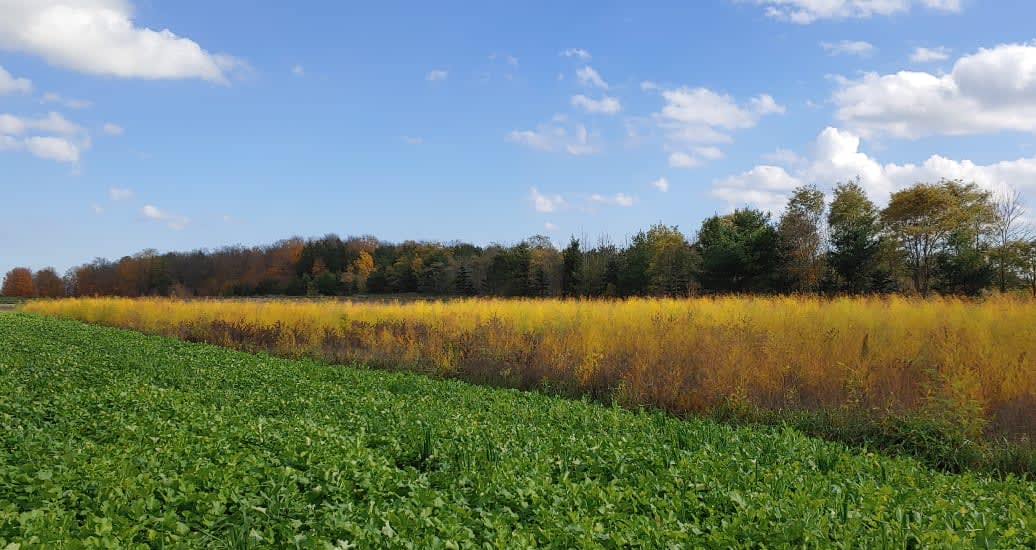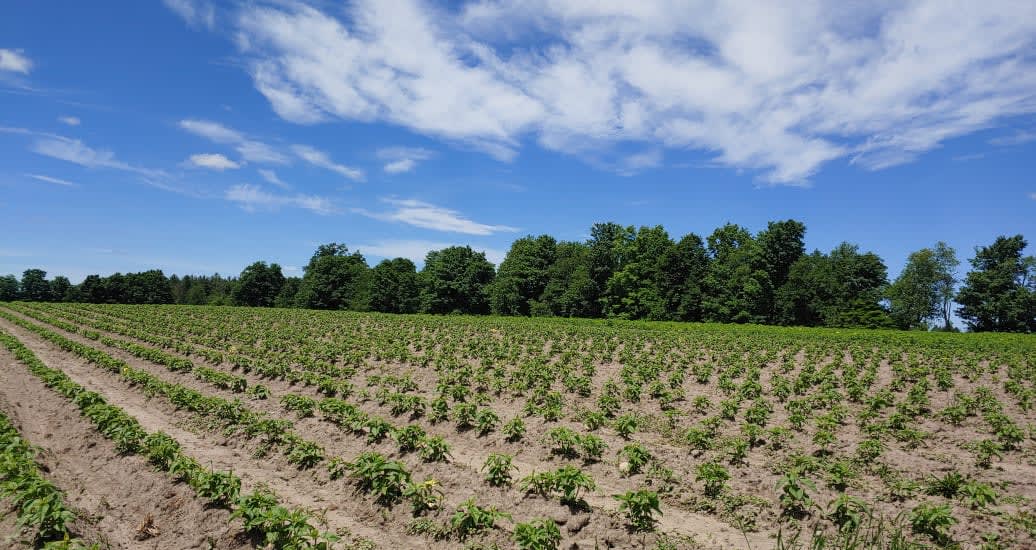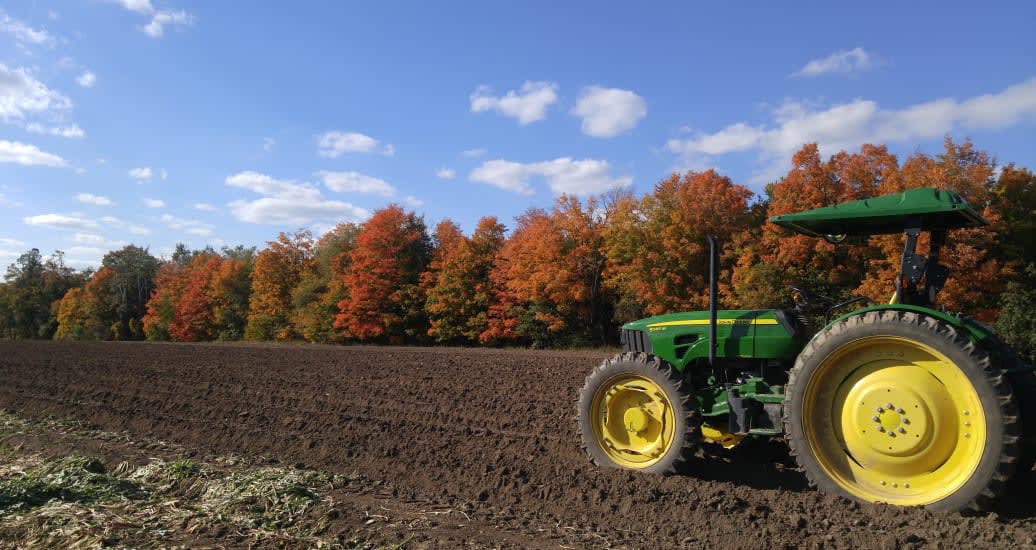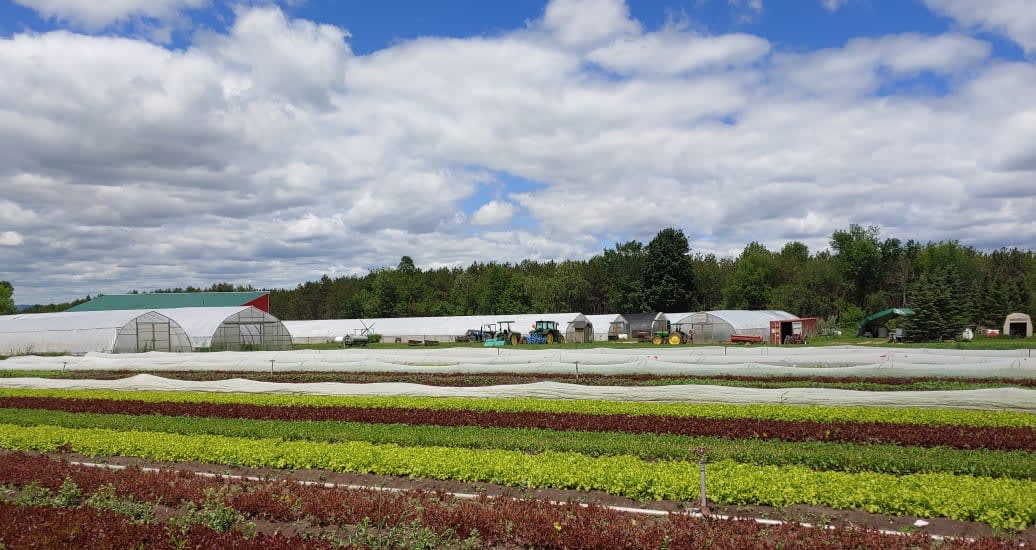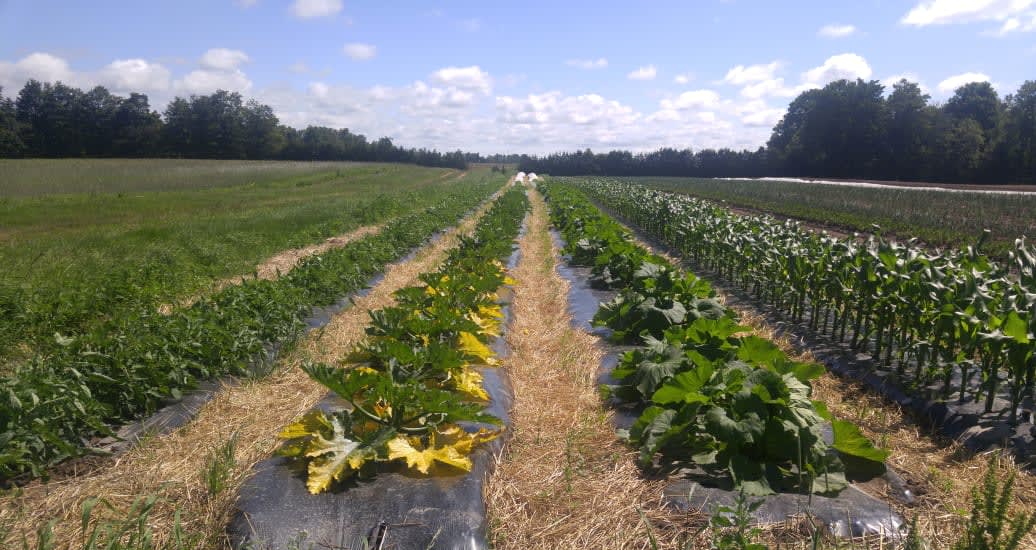About Cookstown Greens
Located one hour north of Toronto, in Essa Township, Cookstown Greens has been producing healthy organic food since 1988. Offering a variety of the highest quality of organic produce in Southern Ontario.

About Our Farm
With eight greenhouses sitting on 100 acres of clay loam land, we produce healthy organic food year-round, providing choice, quality and value for Toronto and GTA families and businesses.
Our farm has over 18 fields allocating two-thirds for rotating cover crops and one-third for growing vegetables. Our greenhouses produce tomatoes in the summer and a year-round supply of organic microgreens.
As stewards of the land, Cookstown Greens consistently practices ethical and responsible standards in everything we do. We leave part of our land untouched and use non-intensive farming methods, which contributes to our farm’s biodiversity.
Our Farming Practices
Cookstown Greens implements the following farming practices; and our overall execution have contributed to the growth and flavour of our organic vegetables.
- Soil Fertility
Our soil is a clay loam soil, which can be challenging to grow in due to its high content of clay/firm anchorage; because of the clay’s ability to retain moisture, the soil can hold nutrients that contribute to the delicious taste of our vegetables.
We commit to annual soil testing to determine which minerals are present in our soil. This is an opportunity to adjust the soil’s PH levels by implementing an extensive 3-year cover crop rotation that adds essential plant nutrients back into the soil, resulting in an increase in overall crop production. - Cover Crops
Cookstown Greens uses organic cover crops that help build and improve soil fertility and soil quality. Cover crops are also used for weed suppression, they manage soil erosion, soil compaction and promote biodiversity.
Soil fertility can be further improved by incorporating cover crops that add organic matter to the soil, which leads to improved soil structure and promotes a healthy, fertile soil. - Field Preparation
Field preparation introduces the beginnings of the phases of farming, which start at the onset of the spring season. The following tractor tasks will include:
- chop cover crop with flail mower
- lightly disc to bury cover crop
- form beds for the vegetable crop (for most root vegetables)
- roll beds to give a flat seeding surface
Each crop may require different field prep in anticipation of the seeding or planting, the next phase in farming.
- Seeding & Planting
When the spring season arrives, we start gearing up for our root storage crops. We seed on 8 fields throughout the season. Our schedule is based on the crop’s germination/growing period, as well as the weather.
The following methods illustrate how we seed or plant into our prepped field beds;- plant seed piece (Jerusalem Artichoke, Potato & Garlic) using a planting implement
- direct seed using the precision or mechanical seeder - used for leafy greens and most root storage vegetables
- transplant seedlings, which have been grown in cell packs, (Celeriac & Onions) using a transplanting implement
- Insect Management
As a farm Certified by Pro-Cert, Cookstown Greens refrains from using pesticides as a deterrent for insects.
With the seasonal arrival of insects/pests, we use the following methods as a means of reducing the potential detrimental insects that could damage a specific crop.
- row covers on arugula, kale & mustard greens, radish and turnip beds
- handpick potato beetles and tomato hornworm
- rely on the natural occurrence of outdoor beneficial insects to take care of other potential pests.
- Irrigation
Cookstown Greens withdraws our field water from a creek on the farm property. We are permitted to draw a certain amount of water for the season. The two methods of irrigation that we use are surface and sub-surface.
We use sub-surface irrigation as much as possible, as this method uses about 30% less water than surface. However, with short season crops, like leafy greens, it is more economical to use surface.
We use sub-surface irrigation on longer season crops such as carrots, parsnip and onions. Carrots and parsnips have long roots, so this method ensures the soil below the surface stays moist allowing for a perfect crop. With our onions and garlic, they require constant water, as a minor drought could potentially damage the crop. - Weeding
Methods of weeding on our organic farm include:
- burning (flame weeding used on our fall crop beet & carrot beds)
- mechanical cultivating (all root beds)
- manual hand weeding (leafy beds)
- Harvesting
The final phase of farming is harvesting. This laborious task yields bountiful summer produce items & root storage crops. Cookstown Greens utilizes both hand-harvest & mechanical techniques.
Hand-harvested crops are Asparagus, Beets, Radish, Turnips, Garlic Scapes & Tomatoes.
Mechanically harvested crops are Carrots, Parsnip, Parsley Root & Leafy Greens.
The combination of mechanical digging, then hand-harvesting crops are Garlic, Potatoes & Jerusalem Artichokes.
- Washing
We use ozonated water to wash all of our vegetables
Ozone is triatomic oxygen, a naturally occurring form of oxygen, which kills bacteria such as E. coli, Listeria, and other food pathogens
It is commonly used in Europe for the treatment of public water systems and food processing
Read more about ozone in agriculture
- Organic Certification
Pro-Cert Organic Systems Ltd. (Pro-Cert) is one of North America’s foremost national certifiers of organic products. Pro-Cert’s certification program is recognized globally, providing international access to the products and brands they certify.
Our entire operation is thoroughly inspected during the growing season on an annual basis. Pro-Cert will monitor the conformity of our operation and enforce compliance during the certification period.

About Our Family
Cookstown Greens is a family-run organic vegetable farm offering a year-round selection of microgreens & root vegetables. We are passionate about producing premium quality vegetables with outstanding flavour.
Learn More About Our Family ›
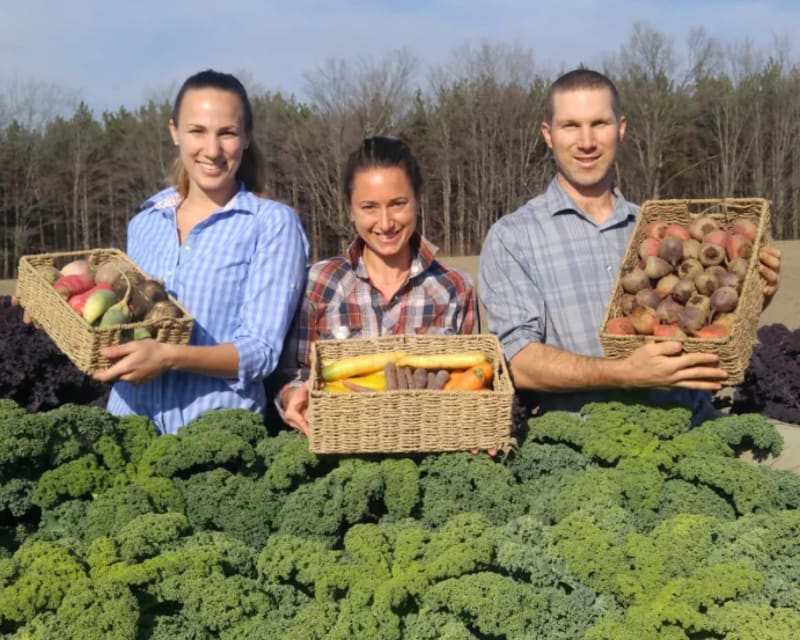
Why Choose Us
Organic farming is rooted in sustainability. As stewards of the land, Cookstown Greens consistently practices ethical and responsible standards in everything we do.
Learn More About Our Farming Practices ›
-
Cookstown Greens are the mainstay of my diet. Their greens last me all week and they stay fresh until my next purchase.
Farm. Fresh. Flavour.
Experience our farm-fresh flavour when you pickup your produce directly from our farm, located one hour north of Toronto in beautiful Essa Township.





